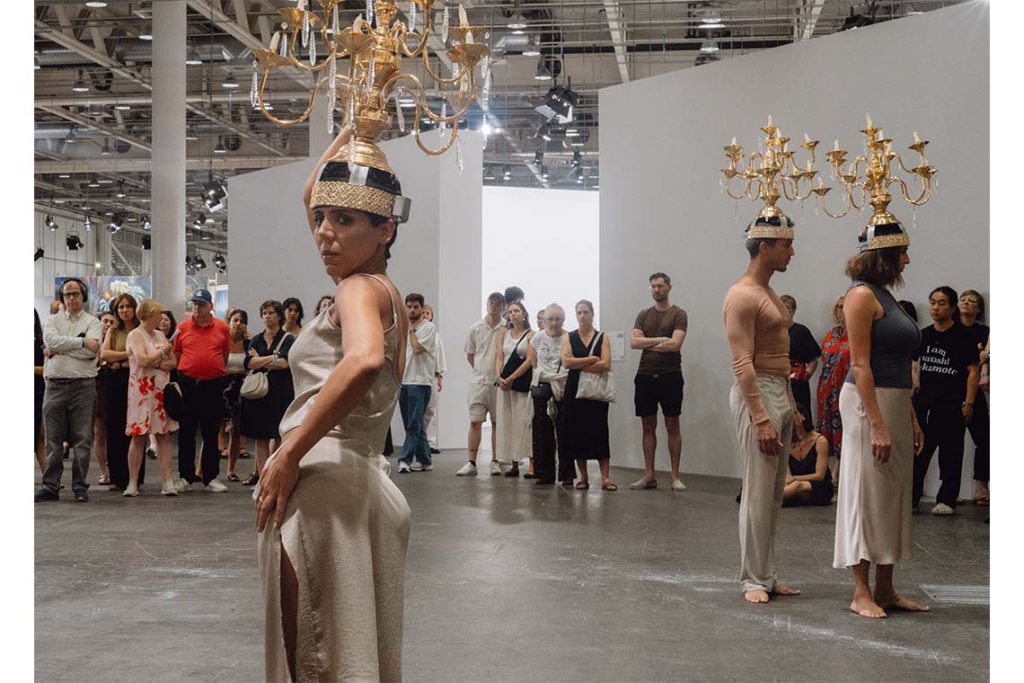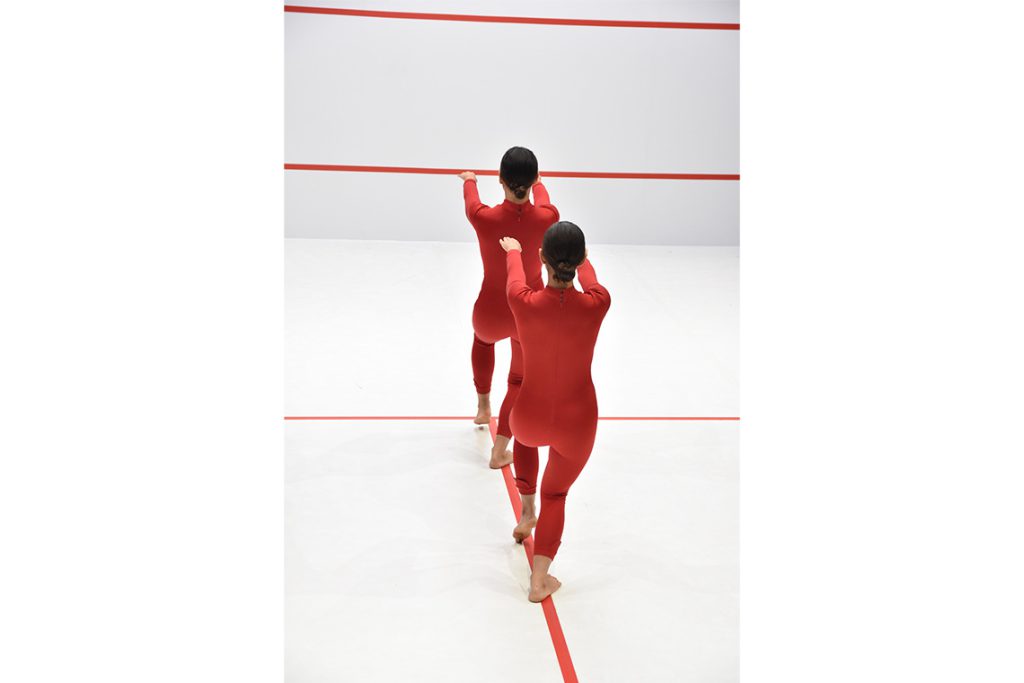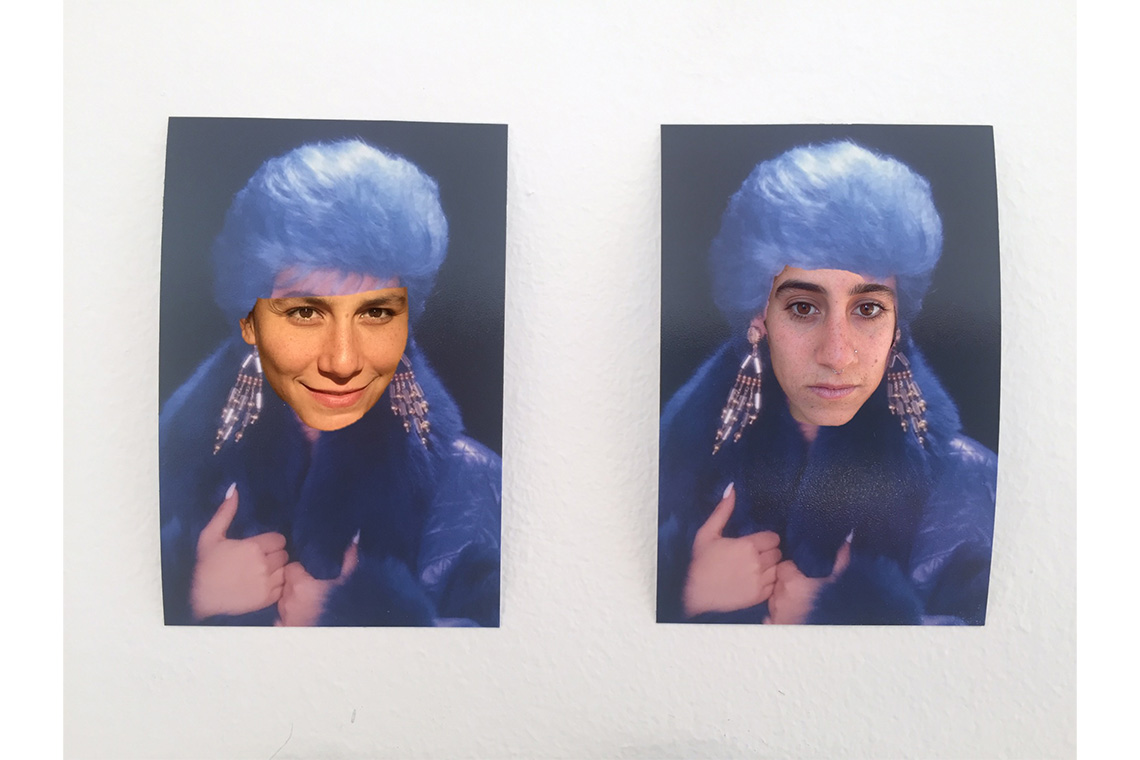The Cairo-based choreographers Noura Seif Hassanein and Salma AbdelSalam specialise in mesmerising and slow-burning performances that blend belly dance with time-based art.
nasa4nasa: Candelabras symbolise opulence and decoration across many cultures throughout the time. What fascinates you about them today in connection to your durational practice?
Canvas: Initially we were attracted to the candelabra as a tool, a stunt. Rather than the opulence of the object, we were intrigued by its transformation into an initiator for dance. The pioneers of belly dance would pride their skill based on the weight and height of the candelabra. Zooba Qlobateya, one of the first women to dance with a headpiece, was known to use a ten- kilo candelabra. Her stunt was to go into the splits while bearing that weight in her head. Other dancers would use shisha trays with lit candles during their performances. The act of balancing weight was what intrigued us the most – it not only highlights skill but also activates a certain presence, a diva. As soon as we placed the candelabra on our heads, it was as though it acted as a summoning device for a strong feminine power.
What inspired you to turn the candelabras into bodily ornaments and more so into headpieces?
The candelabra dance first appeared in Egypt in the early 1900s. Zooba El Klobateya made the dance extremely popular and dancers like Shafiqa El Kobteya, for example, reached extreme heights of fame and fortune. She allegedly fed her horses champagne and her carriage was known to be longer than the Khedive’s. Her life, however, like that of all the other dancers, ended drastically, impoverished on the streets. These women dared to dance, so society reprimanded them. We are interested in the narrative that accompanies the dance, so we also wanted to bring these dancers to life and allow them to be the ghosts in our process.

Balance and endurance are critical parts of your work. How important is the concept of beauty in what you create?
Beauty is definitely an element in the work, but we are more interested in creating a practice in which the performers can listen and move together. The beauty and the skill is to be in the moment, to bear the weight of the apparatus without losing sight of the piece. In that violence and labour, you find beauty – in the literal balance of the head and the balance between labour, pain and spectacle. Time is another factor that highlights this tension; beauty is perceived through the dancers’ movements, especially as the weight of the candelabra becomes louder and more violent.
How do you see the impact of time-based performance art – especially those that deal with endurance – in the age of Instagram and TikTok?
Time is central to our work, we like to mess with it. We explore slowness, real time and what it means to be in time together. It was tricky and bold for us to show Sham3dan at Art Basel. It is a 30-minute long performance, but the impact was there when people actually gave it time. The videos we have created for Instagram also highlight how we want our viewer to interact with our work on this platform. We sometimes aim to interject the rhythm of scrolling and demand a pause, or sometimes we want to feed into the rhythm.
You adapt alternative spaces as backdrops to your work, such as a squash court. How does this decision help bridge ‘real life’ with a staged performance?
We like to blur these lines. The squash court was one of the most theatrical stages we have worked with. We always refer to it as our third choreographer.

Harmony is another important pillar, especially when expressed through the unity of the dancers. Belly dance, however, is traditionally performed solo. What kind of power and impact do you find in group performances?
We are interested in harnessing the presence of the contemporary dance scene in Cairo. Although the dancers move in synchronicity, they move to listen, and thus their individuality is not erased. Each dancer represents a planet in the orbit we create. We want to create a field of togetherness, calling also on the predecessors of this dance to join us. While it is a group piece, we still want to assert the individuality of each dancer. We think of the work as multiple solo pieces. The dance we create addresses the most pressing themes that accompany us in our dances. How much are you willing to sacrifice to dance? How can you showcase the labour that goes into dance? How do beauty and violence coalesce? Also, how can we find strength in togetherness?
How was your experience of performing in the Unlimited sector at Art Basel? What was the fair atmosphere like in comparison to your other recent shows?
We are aware that art fairs don’t give you the same attention span. It was beautiful to see how this piece stopped time in the middle of all the frenzy and a fast paced audience. It felt political to carve out that literal space and demand that time in the middle of Unlimited. The aliveness of the performance in the middle of all the art was also extremely interesting to observe. It was extremely impressive to see the performers dance for seven nights in a row, each time honing the craft more and more. It was as though they insulated themselves into a bubble that was permeable only for those who stopped to give it time.



